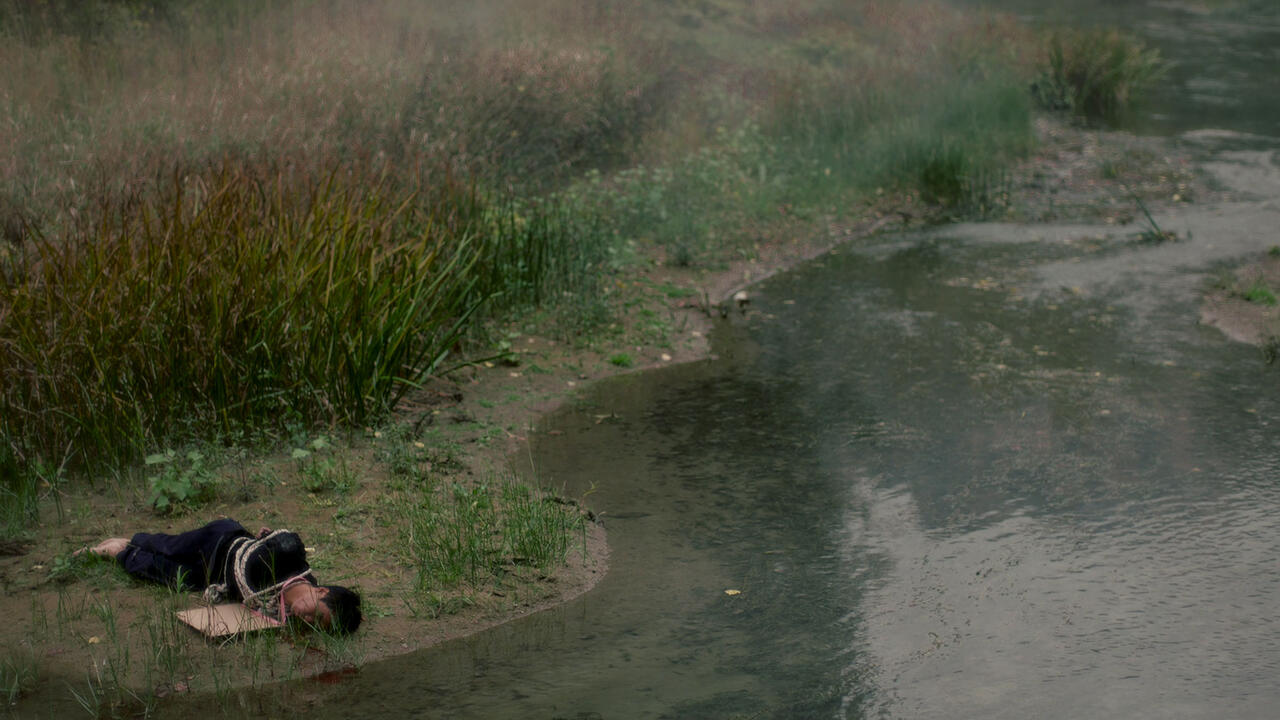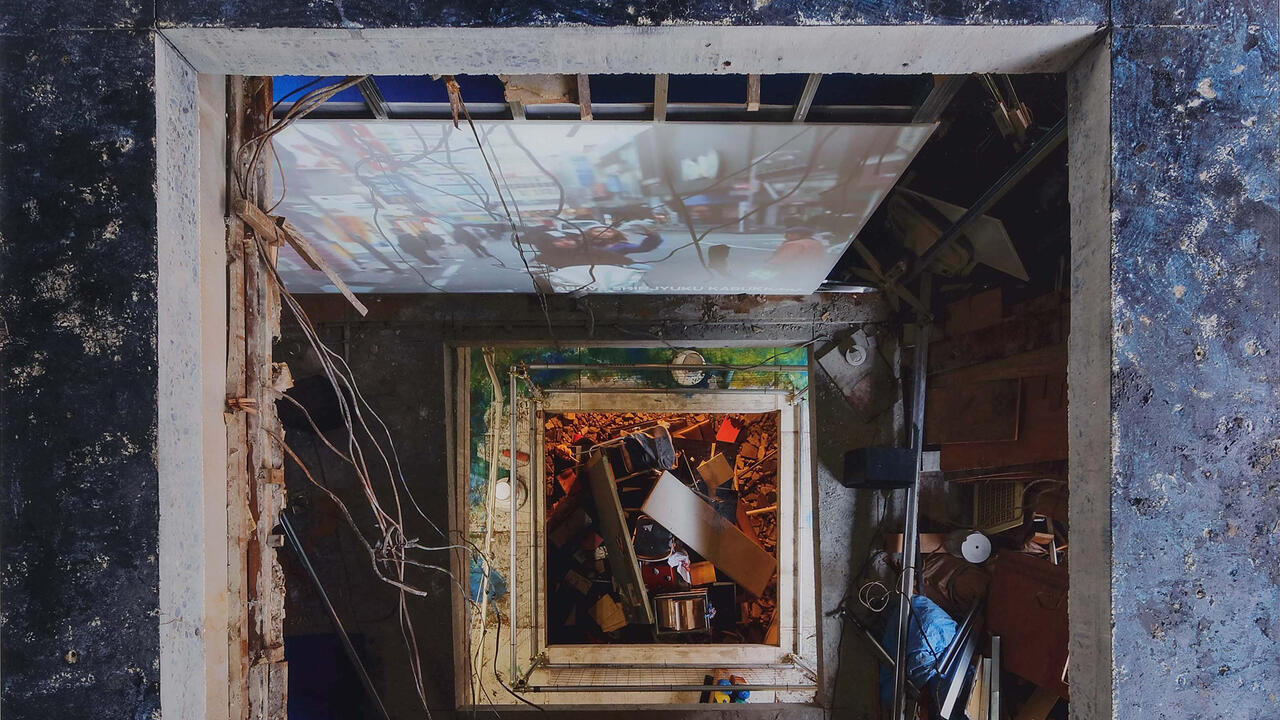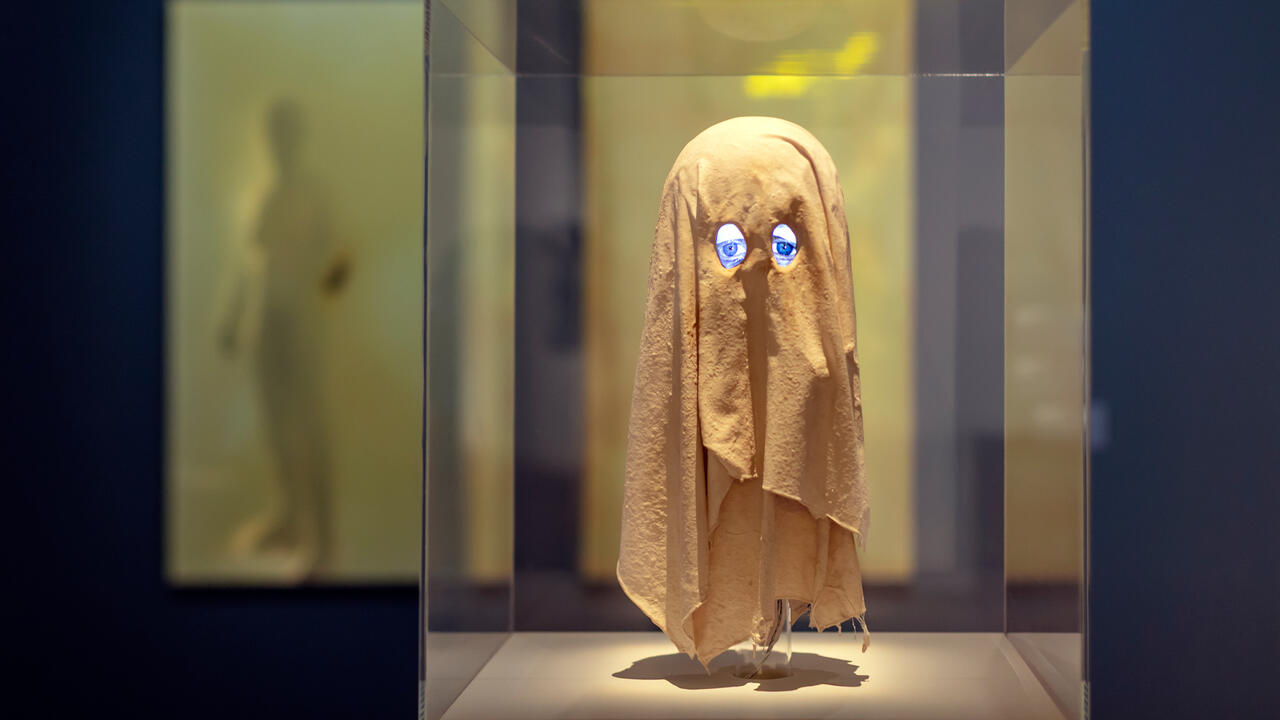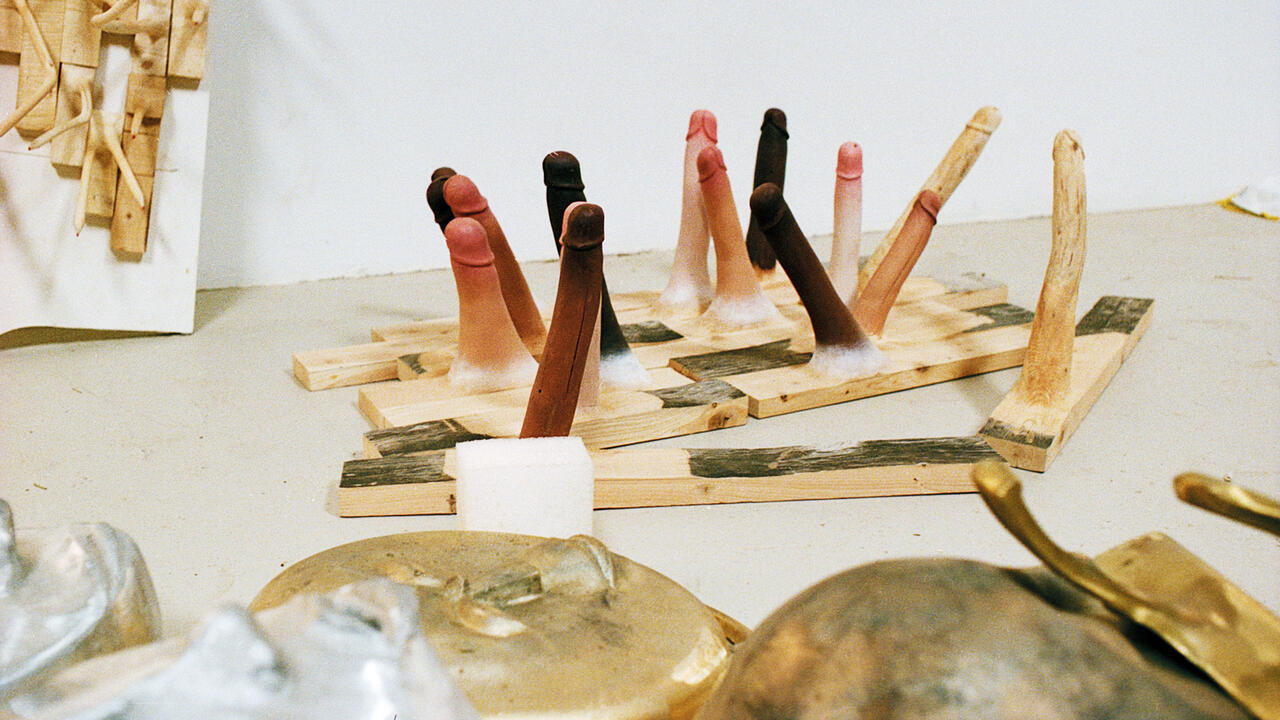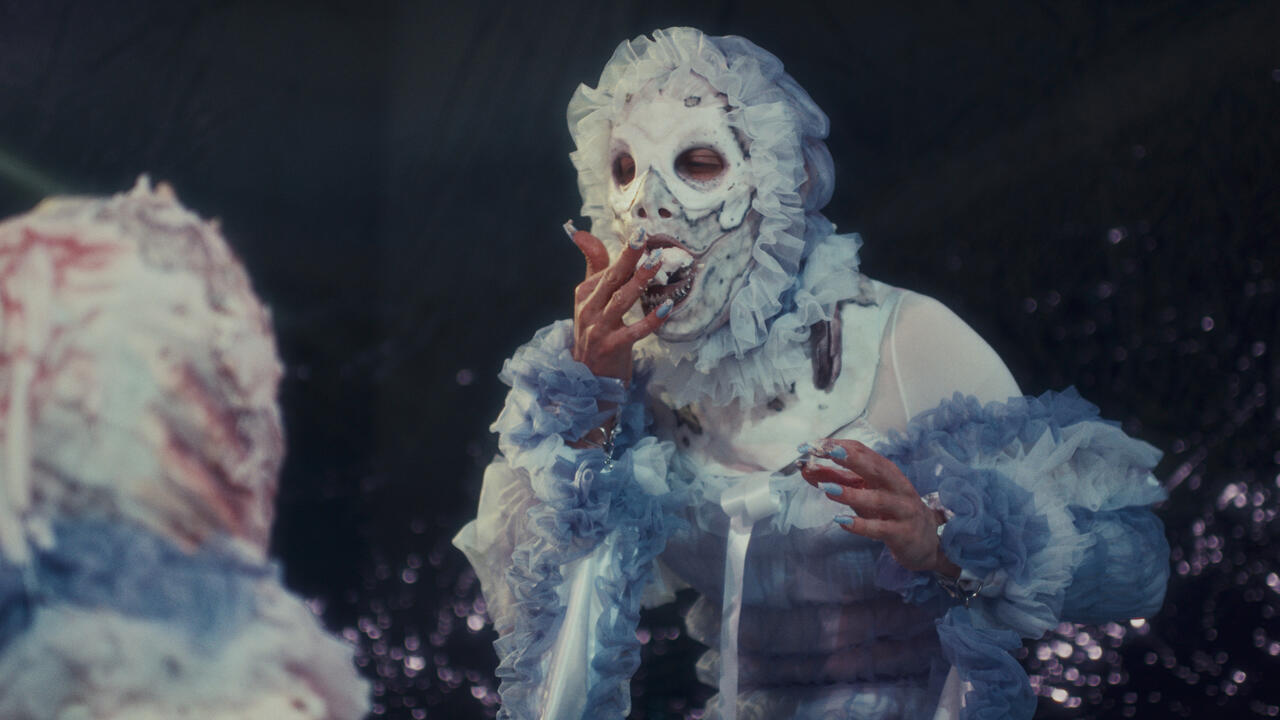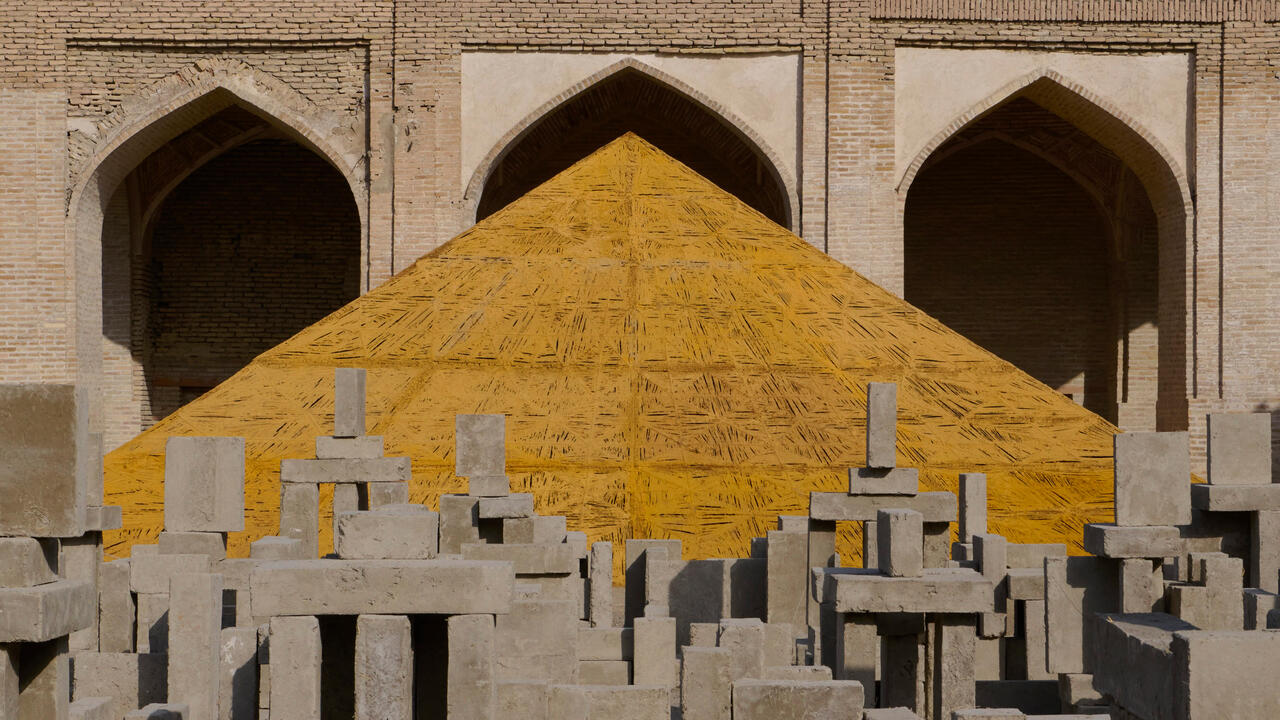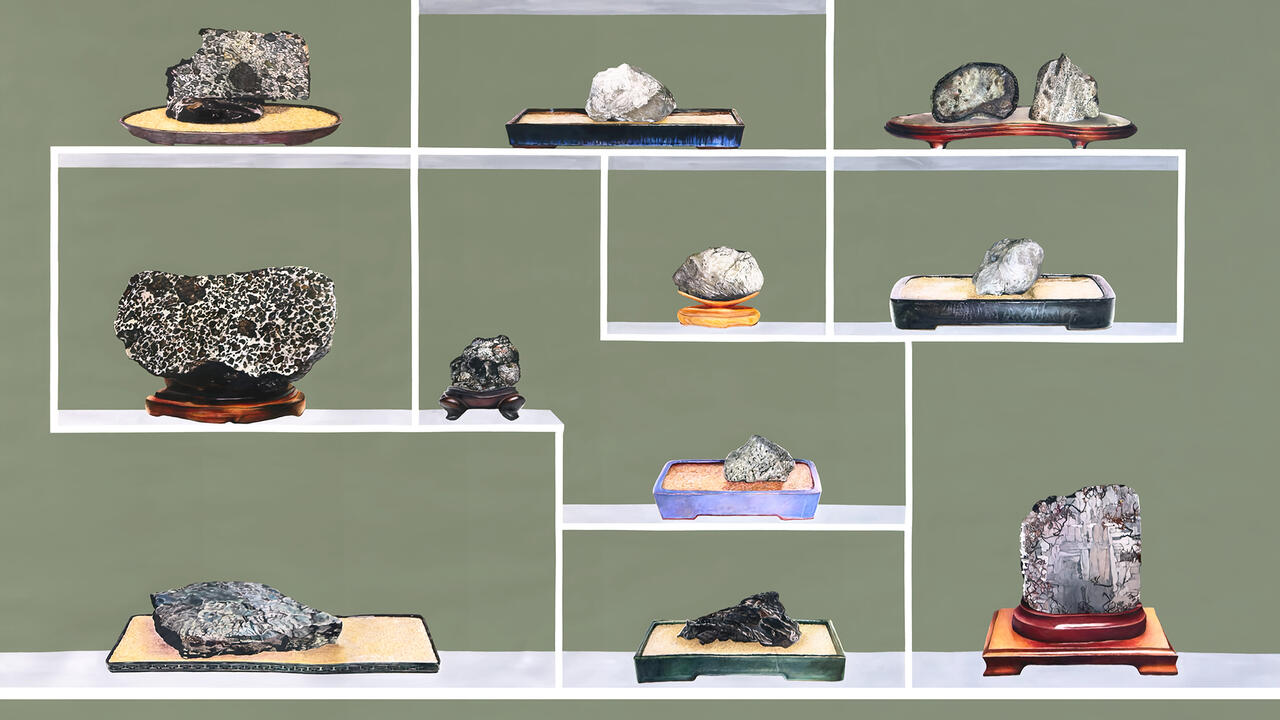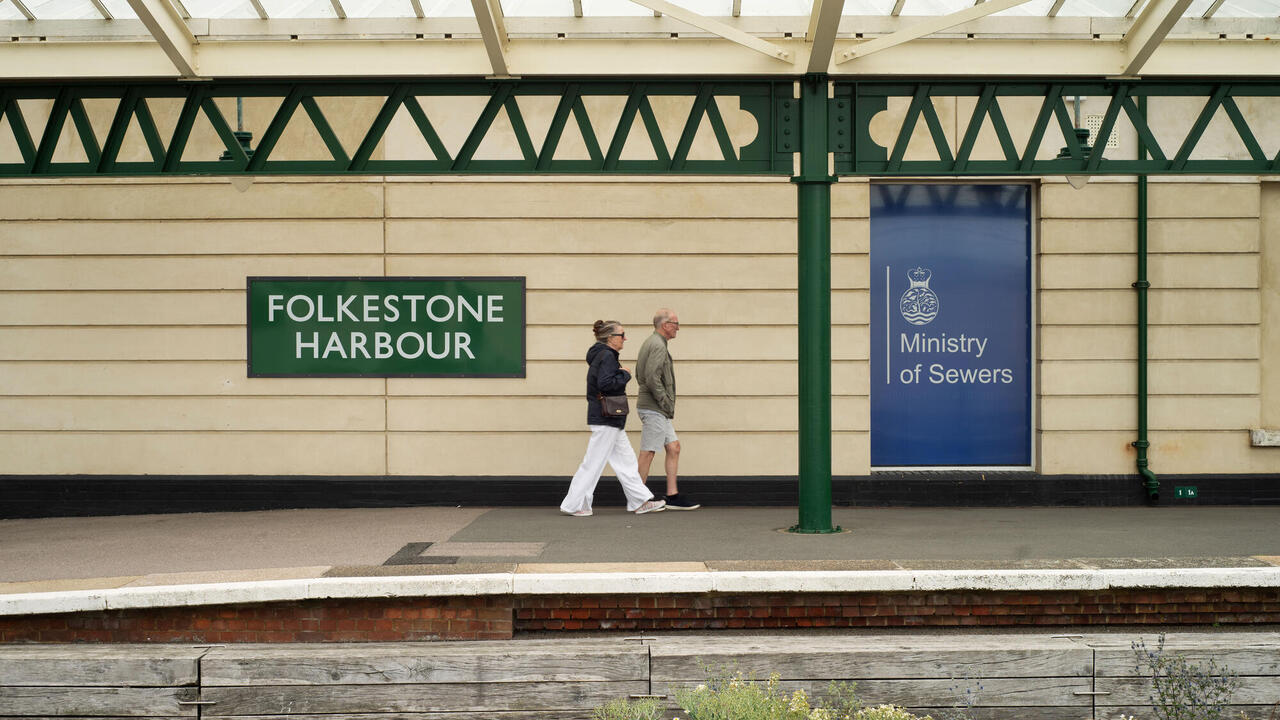Critic's Guide: Shanghai
From Xu Zhen’s store to Felix Gonzalez-Torres’s first show in China, the best shows to see in the city this week
From Xu Zhen’s store to Felix Gonzalez-Torres’s first show in China, the best shows to see in the city this week


Nadim Abbas
Antenna Space
9 November – 10 January 2017
For his first solo gallery exhibition on the mainland, Hong Kongese artist Nadim Abbas has transformed Antenna Space into an uncanny laboratory equipped with helpful notes to parse the artist’s peculiar creative approach. Taking up the entrance corridor is Blancmange, n ways (2016), a hilarious installation where Abbas’ penchant for kitsch (a photograph showing a blancmange pudding faces wallpaper where the image is repeated) and puns (blancmange also references the Blancmange fractal curve, noticeable in the profiles of the geometric objects on the floor) becomes an absurd pas de deux. Such translation of dry scientific methodology into engaging artistic effect continues in the main gallery. Images of Human Rhinovirus 14 (2016) – the common cold virus – built with open-source modelling programmes, are projected onto several beach balls floating in the air. This macroscopic translation lends strangeness to the all-too-familiar physiological effect of the virus, bringing us closer to the exhibition’s core: a poke through the verisimilitude of scientific language to confront the reality below. On both wings of the main hall are Chamber 667/668 (2016). With a carpet suggestive of one found in an American campaign office and almost no sign of human habitation, one cannot help but tremble at the near future ir represents.

Neïl Beloufa, ‘Soft(a)ware’ & Guan Xiao, ‘Elastic Sleep’
K11 Art Space
9 November – 8 December
Located on the B3 Floor of K11 Art Mall, chi K11 Art Space inevitably shares many features with the mall, an iconic modern architectural invention that has since bred and sponsored an expansive network of contemporary symptoms. Compact, flattened and low-ceilinged, the space is almost hostile to large-scale installations and monumental sculptures which demand a level of spatial latitude for critical engagement. But it is precisely these spatial and cultural defects that make K11 the perfect host to the dual exhibition of Guan Xiao and Neïl Beloufa. Both are markers of a new generation immersed in technologies, consumer culture and the internet; both are also highly aware of their very conditions and critically investigate varied facets within the contemporary landscape using art making as a response to those conditioning forces. Curated by ICA’s Katharine Stout, ‘Guan Xiao: Elastic Sleep’ sees the tour of a series of Guan’s new sculptures from Europe, where they were shown at the ICA in London, to China as well as several film and installation works new to a Chinese audience. The exhibition is a comprehensive overview of the artist’s growth in the recent year and proposes interrelationality as that which lies at the core of Guan’s worldview.
On the other side of the museum is French artist Neïl Beloufa’s first solo exhibition in China. Curator Victor Wang adopts a tripartite reading narrative and locates Beloufa’s work as occupying ‘an infrastructural space between environment, architecture, and network.’ The two shows together create a proactive dialogue that contains – and calls for – radical proposals for new understandings of the contemporary world.

Austin Lee, ‘Light Painting’
BANK Gallery
8 November – 17 December
In June, a new local policy banning private entities from renting state-owned property meant BANK was evicted from its previous gallery space – the Union Bank building near Shanghai’s Bund district that gave the gallery its name. Now BANK has finally announced a solo by Austin Lee as the inaugural show of its new venue in Xuhui District. While the New York-based artist may have earned his reputation in North America and certain parts of Europe for his otherworldly paintings (as well as his hyped Instagram account), his presence in China is still relatively minimal, having only shown in the group exhibition ‘Full of Peril and Weirdness’ curated by Robin Peckham and Wanwan Lei at M WOODS, Beijing, in 2015. Using a method which involves translating digital drawings to the material canvas, his formal treatment of the body follows the historical lineage of cartoon figuration – elastic and malleable, and therefore prone to affects from social surroundings. ‘Light Painting’ is the artist’s first solo exhibition in China and it solicits the audience to contemplate the hybrid role of the artist as creator, consumer and animator in today's image-based economy – as well as the networked and mediated nature of images within contemporary art’s ecosystem.

Felix Gonzalez-Torres
Rockbund Art Museum
30 September – 30 December
Private yearnings are almost always followed by awkward anticipation. Occasionally they lead to a serendipitous finale. This long-awaited retrospective of Felix Gonzalez-Torres at Rockbund Art Museum marks the first solo exhibition of the late American artist in China, which also turns out to be the most poetic show the museum has hosted in its seven-year history. In order not to disturb the trademark quietness of Gonzalez-Torres’ oeuvre, curators Larys Frogier and Li Qi limit their own lyricism to the exhibition brochure, allowing the museum’s space sole intimacy with the artist’s sculptural bodies. Blankness, consistency, repetition, and the passage of time, the hallmarks of Gonzalez-Torres’ minimalist practice, are subtly welded into the exhibition architecture. Discreet details such as the playlist of Chinese waltz music that accompanies “Untitled” (Arena) (1993) and applying a transparent heat-proof film over the French window on the second floor to protect the candied bodies of “Untitled” (Portrait of Ross in L.A.) (1991) are all tender touches that fill the show with a generous and meditative sensibility.

He Yida, ‘Right Misplacement’
A+ Contemporary
29 October – 11 December
In 2013, He Yida had her first solo exhibition ‘In Case’ at C-Space, Beijing, before moving back to her hometown of Shanghai. When she finally relocated to a much more spacious studio in 2015 and dialed the gallery director’s number to discuss shipping the artworks she had left in their care to Shanghai, she was told that all of the works had been accidentally discarded by the cleaning lady who mistook them for trash. In light of this disheartening event, especially for an artist whose practice can admittedly be subsumed under the rubric of institutional critique, one may read He Yida’s new solo exhibition as her affidavit of defense. Titled ‘Right Misplacement,’ the artist admits to the awkwardness when her sculptural installations – often made of street junk such as cardboard, nylon net, and concrete blocks – intervene in the gallery’s standard white cube, but goes on to affirm their insignificance through their production method and display. All untitled – with the exception of two works – and either lying on the floor or leaning casually against the gallery walls, their interplay of texture and weight of varied readymades and their interaction with the gallery space convey what the artist calls an ‘anti-monumentality’: a formal attribute as well as creative sentiment that calls into question the notion of art’s ‘aura’ and contemporary value structures.

Xu Zhen Store
MadeIn Gallery
5 November – 12 December
Soon after the founding of MadeIn Company, a contemporary art production enterprise with a staff of more than 50, in 2009, artist, curator and MadeIn CEO, Xu Zhen, earned himself the title Meilaoban, an epithet so brilliant in its semantic fecundity (meaning everything from ‘boss of MadeIn” to ‘coal mine owner’ to ‘non-boss’) that it was instantly picked up by every MadeIn employee and is now widely recognized by aficionados in the Chinese art circle. This in-joke serves as the perfect footnote to Xu’s evolution this past decade, which can be summarized as offering a persistent proliferation of identities – and brands – to inflect his place, and the role of art, in the organizational structure of society. While sometimes criticized for being opportunistic, and with not all his tactics having worked out successfully, one must still credit Xu’s boldness and momentum for constantly developing new models and rhetorics. The latest ‘Xu Zhen Store’ is the most exciting project produced by MadeIn this year: it is at once both an exhibition and retail store, where all items on exhibit – from limited edition sculptures to sunglasses – are conceived by the brand Xu Zhen and are up for purchase. Xu’s, or I should say MadeIn’s, levelling of value structures by means of consumption, done in the name of ‘the production of creativity,’ risks a critique of accelerationism; but leaving art criticism aside for just a second, this really is one of its kind in history.

Ode to Infrastructure
META Project Space
29 October – 21 January, 2017
In META’s 50-square-metre exhibition space hidden in a quiet alley of Shanghai’s former French concession, Pan Lv, Zhou Xin, and Wang Bo have put on a close-knit show that grazes the politics and poetics of infrastructure with both acuity and humour. Taking the conversion of infrastructure – oftentimes cold, invisible technical systems – into a kind of lauded aesthetics that penetrate power structures as the point of departure, the trio plunges into post-1950s Chinese audio-visual materials – from the archive of the propaganda pictorial Renmin Huabao, government recordings, to politicized pop music from the early 2000s and their music videos – to trace an aestheticized infrastructure’s horizons and its ideological workings. Presented in the varied forms of photo collage, multi-channel video projections, a sound installation, and a CD mix, the exhibition subtly proposes new interpretative frameworks for historical images previously often relegated to a strictly socialist-realist reading as well as their contemporary variables whose ‘ode to infrastructure’ are often left unnoticed.
Other recommended shows in the city:
Shanghai ProjectHimalayas Museum4 September – 30 July 2017 11th Shanghai BiennalePower Station of Art12 November – 12 March 2017
Lead image: Neïl Beloufa, Untitled (Ceiling), 2015, installation, steel, resin, cigarettes, dimension variable. Courtesy: the artist and Balice Hertling Gallery, Paris








